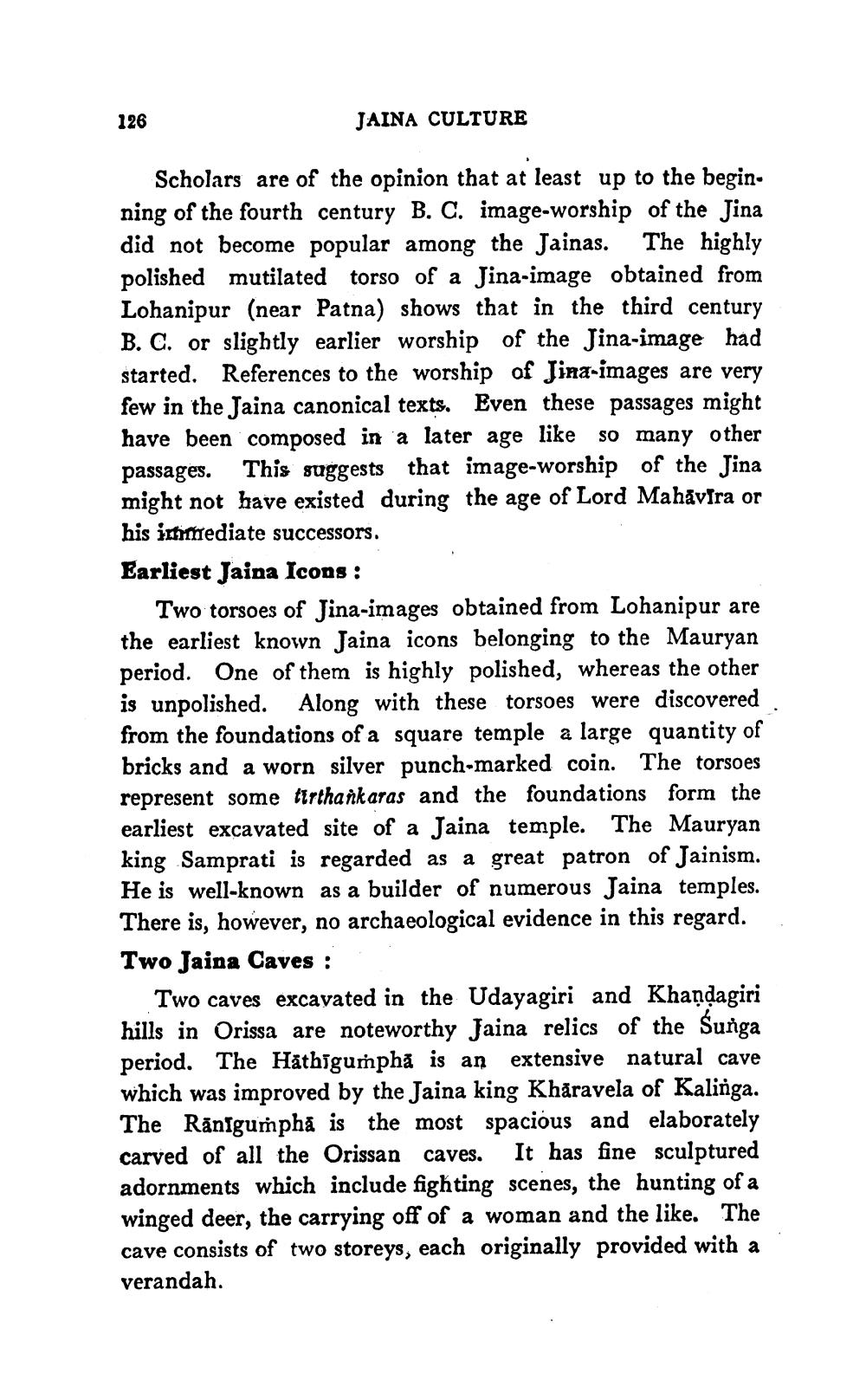________________
126
JAINA CULTURE
Scholars are of the opinion that at least up to the begin. ning of the fourth century B. C. image-worship of the Jina did not become popular among the Jainas. The highly polished mutilated torso of a Jina-image obtained from Lohanipur (near Patna) shows that in the third century B. C. or slightly earlier worship of the Jina-image had started. References to the worship of Jina-images are very few in the Jaina canonical texts. Even these passages might have been composed in a later age like so many other passages. This suggests that image-worship of the Jina might not have existed during the age of Lord Mahavira or his immediate successors. Earliest Jaina Icons :
Two torsoes of Jina-images obtained from Lohanipur are the earliest known Jaina icons belonging to the Mauryan period. One of them is highly polished, whereas the other is unpolished. Along with these torsoes were discovered from the foundations of a square temple a large quantity of bricks and a worn silver punch-marked coin. The torsoes represent some tirthankaras and the foundations form the earliest excavated site of a Jaina temple. The Mauryan king Samprati is regarded as a great patron of Jainism. He is well-known as a builder of numerous Jaina temples. There is, however, no archaeological evidence in this regard. Two Jaina Caves :
Two caves excavated in the Udayagiri and Khandagiri hills in Orissa are noteworthy Jaina relics of the Sunga period. The Häthīgumpha is an extensive natural cave which was improved by the Jaina king Khāravela of Kalinga. The Rānīgumpha is the most spacious and elaborately carved of all the Orissan caves. It has fine sculptured adornments which include fighting scenes, the hunting of a winged deer, the carrying off of a woman and the like. The cave consists of two storeys, each originally provided with a verandah.




